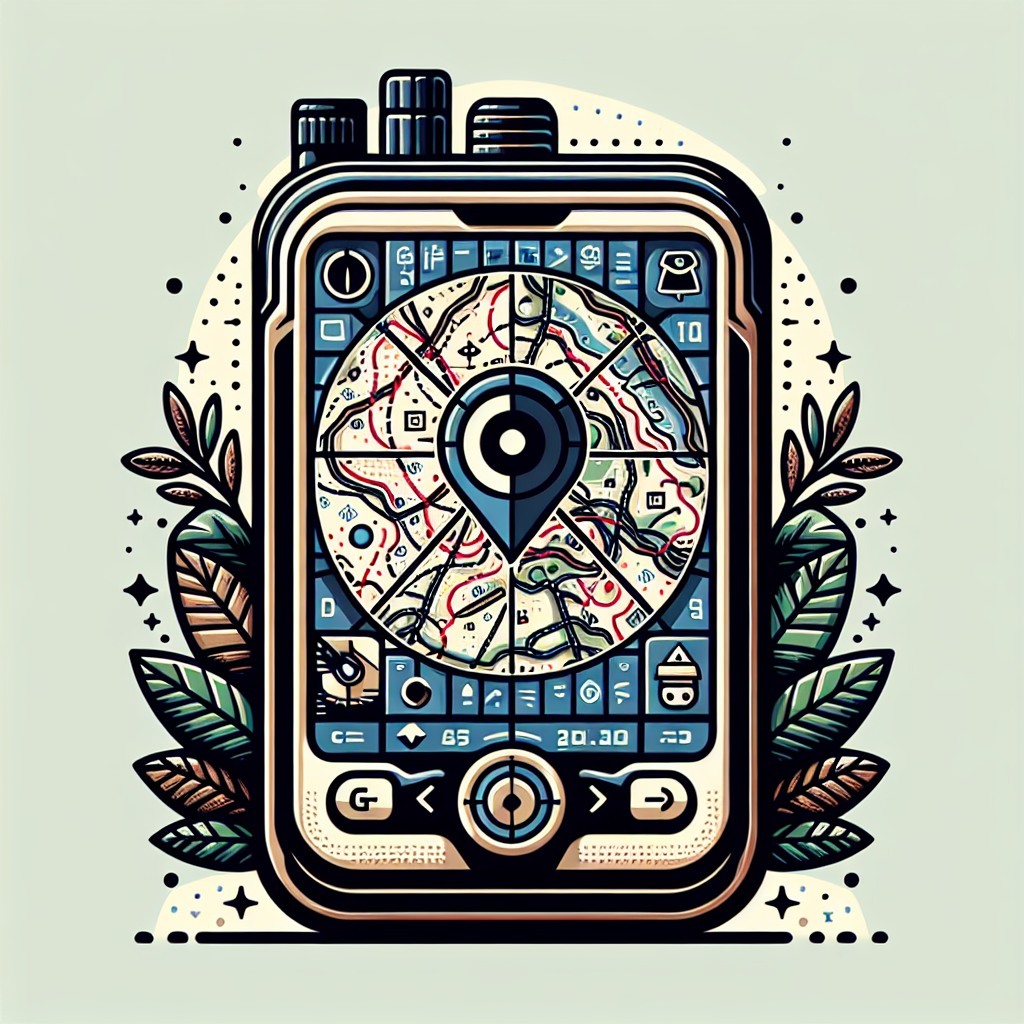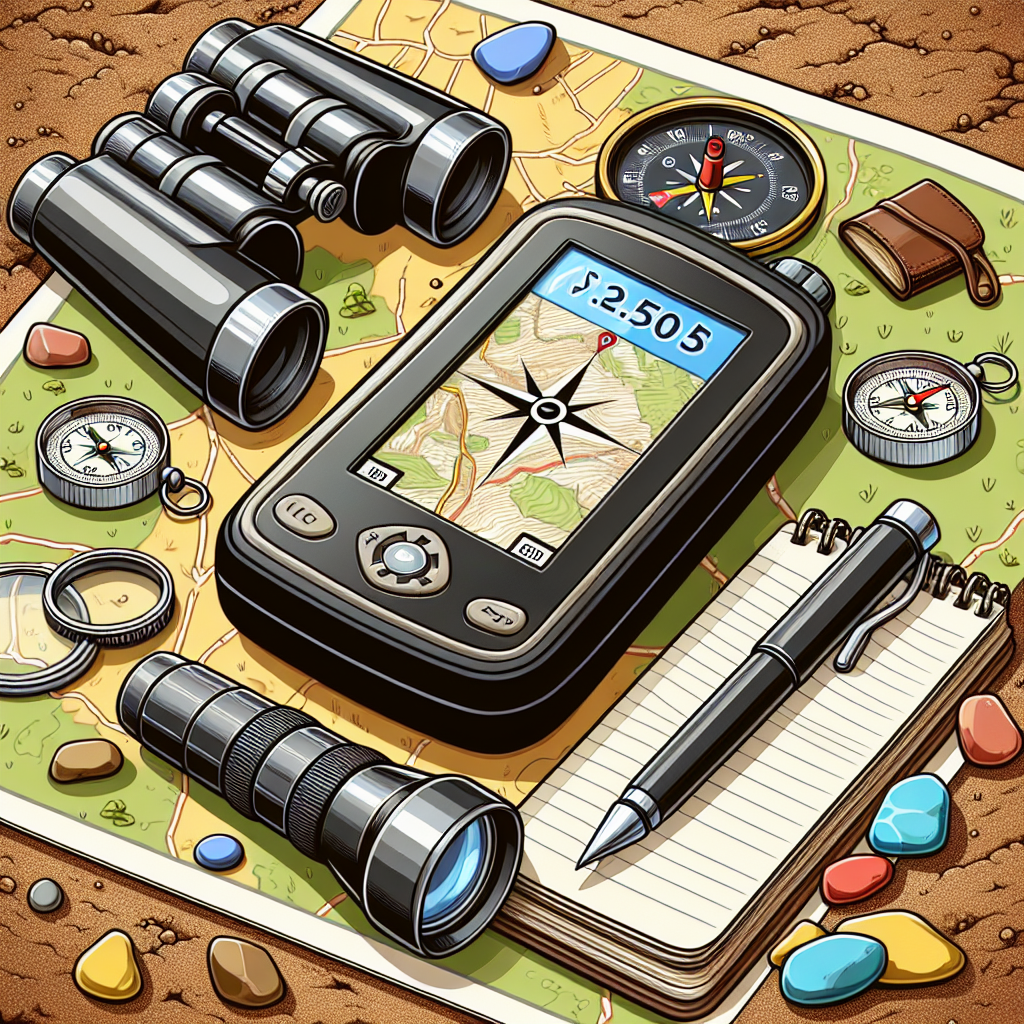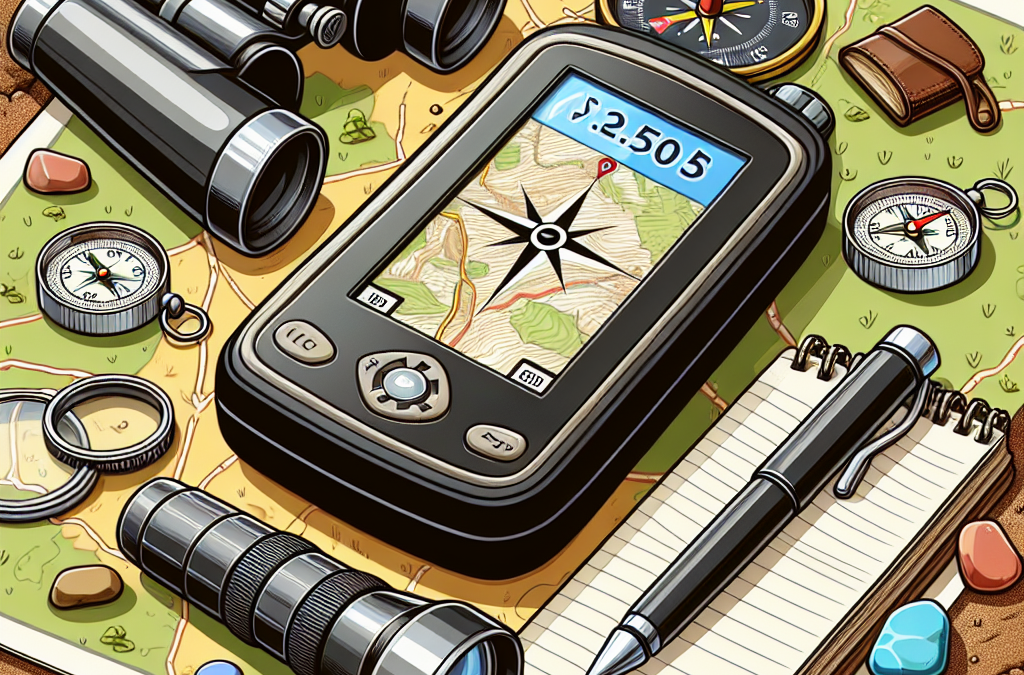You’re about to embark on an adventure into the exciting world of Geocaching, a modern-day version of treasure hunting that’s taking the outdoor activity scene by storm. “The Essential Guide To Geocaching: Modern Treasure Hunting” is tailored just for you, providing an overview of this intriguing pursuit. Imagine, all you need is a sense of adventure, a sturdy pair of shoes, and a GPS-enabled device to discover hidden treasures waiting to be found across the globe. Brace yourself for a journey that’s filled with fun, surprises, and the occasional challenge. This guide will equip you with the necessary knowledge to ensure a seamless start to your geocaching endeavors. So, get ready for an outdoor experience like no other, as you step into the captivating world of Geocaching.
Understanding Geocaching
Geocaching is a fantastic outdoor activity you might not be familiar with yet. At the most elementary level, geocaching is a high-tech treasure hunt that uses GPS technology. Participants known as geocachers use GPS or smartphone with GPS capabilities to find hidden containers around the world.
Definition of Geocaching
Think of geocaching as a game where items are hidden around the world and you use your GPS to find them. The hidden objects, known as geocaches or simply caches, could be located anywhere from your local park to a remote mountain top.
History of Geocaching
The fascinating history of geocaching begins in the early 2000’s when GPS systems became accessible to everyone. On May 2, 2000, the U.S. government officially ceased degeneration of GPS signals available to the public, which means the accuracy of GPS devices increased tremendously overnight. The very next day, Dave Ulmer hid a container in Oregon and shared the GPS coordinates online. This event marked the birth of geocaching!
Popularity and Growth of Geocaching
The popularity of geocaching has exponentially increased since its inception. It’s estimated there are over 3 million active geocaches available in more than 190 countries. Geocaching’s appeal lies in its simple, inclusive nature and it’s capacity to foster a sense of community among its participants.
Required Equipment for Geocaching
GPS or Smartphone with GPS capabilities
The most important tool you need for geocaching is a GPS device or a smartphone with GPS capabilities. The GPS will guide you to the general location of the cache.
Geocaching App or Website Membership
There are many geocaching websites and apps, and the majority of them require a free account to access the coordinates of the hidden geocaches. Some websites may offer paid subscriptions for additional features.
Notepad and Pen for Logbook Entries
Bring a pen or a pencil as caches will often contain a logbook for finders to sign and date. Small notebooks can also help keep track of hints or clues.
Swap or Trade items
Swapping or trading items is one of the best parts of geocaching. Most regular-sized caches contain trinkets for trade. If you take an item, tradition dictates you should leave an item of equal or higher value.

Getting Started with Geocaching
Setting Up an Account
You usually need to sign up with one of the geocaching services. The sign up process is easy, you just provide your email and create a password. A username or geocaching handle is also required, and often used for logging finds.
Using the Website or App
Geocaching websites and apps are very user-friendly. You can search for caches near your location, and for each cache, they will show you its coordinates, the size of the cache, and its difficulty and terrain types.
Choosing Your First Coordinate
If you’re just starting out, pick a cache of small size with low difficulty and terrain rating. This way, you get the hang of how to locate and log a cache before tackling the more challenging ones.
Reading and Interpreting GPS Coordinates
Understanding Longitude and Latitude
GPS coordinates are typically given as latitude and longitude. Latitude lines run east-west and indicate how far north or south a location is from the equator. Longitude lines run north-south and indicate how far a location is from the Prime Meridian.
Entering Coordinates into GPS or Smartphone
You can enter the coordinates of the geocache in your GPS device or GPS app on your smartphone. Make sure you enter the exact coordinates as precision is key in geocaching.
Navigating to the Cache Using GPS
Once you’ve entered the coordinates, your GPS can guide you towards the cache. When you get within, say, 20 feet from the cache, you’ll likely have to rely on your senses and ingenuity to find the exact hiding spot as GPS devices can sometimes be slightly inaccurate.

Understanding Geocache Ratings
Difficulty Ratings
The difficulty rating typically ranges from 1 to 5, with 1 being easiest and 5 being hardest. It represents how hard it is to find a cache and solve the clues required to access the cache.
Terrain Ratings
Terrain ratings—which also usually range from 1 to 5—indicating how difficult it is to access the area where the cache is hidden.
Size Ratings
Size rating helps geocachers know what to expect from a cache, such as its storage capacity for trinkets and its relative visibility to muggles (non-geocachers).
Types of Geocaches
Traditional Geocaches
The most common type, they consist of a container and a logbook. The coordinates listed on the websites point the exact location of the cache.
Multi-Caches
Multi-Caches involve two or more locations, with the final location being a physical container with a logbook inside.
Mystery or Puzzle Caches
The coordinates listed for these types are not for the actual cache but for where you start by solving a puzzle.
EarthCaches
While EarthCaches do not have a physical container, they offer Earth science lessons by taking you to a geological feature.
Letterbox Hybrid
This is a combination of geocaching and letterboxing. It involves clues and a rubber stamp that the owner leaves in the cache for you to mark your personal journal.
Event Caches
These are coordinated gatherings for geocachers. Meet-and-greets, clean-up events, celebrations, and workshops are few examples.
Rules and Etiquettes of Geocaching
Leave No Trace
The prime rule is “Leave No Trace”. Always ensure you leave the area as you found it.
Respect Privacy and Property
Always respect the privacy and property rights of others. Don’t trespass on private property.
Replacement of Caches and Items
If a cache is damaged or missing, report it to the owner. If you take an item, remember to leave an item.
Logging Your Find
Once you’ve found your cache, don’t forget to log it on the geocaching website or app.
Personal Safety While Geocaching
Staying aware of Surroundings
It is important to stay aware of your surroundings while geocaching. Keep an eye out for natural hazards.
Geocaching Alone VS With A Group
While geocaching alone can be a peaceful experience, geocaching in a group is often safer and a lot of fun.
Wildlife Safety
Be sure to take special precautions in areas where you could encounter wildlife.
Weather Considerations
Always check the weather forecast before you go geocaching to ensure your safety.
Benefits of Geocaching
Geocaching isn’t just a lot of fun; there are several benefits to this treasure hunting adventure.
Physical Fitness
Geocaching gets you off the couch and out in nature, making it a fun way to stay physically active.
Mental Challenge
Solving the clues and puzzles often involved in finding caches can provide a good mental workout.
Exploring New Areas
Geocaching is a great way to discover new places that you might not have found otherwise.
Family and Community Involvement
Geocaching is an activity that can be enjoyed by people of all ages, making it a great way to spend time with family or meet new people in the geocaching community.
Taking Geocaching to the Next Level
Hosting a Geocaching Event
Hosting a geocaching event can be a fun way to get involved in your local geocaching community.
Creating your own Cache
Creating your own cache gives you the opportunity to provide a fun challenge for other geocachers.
Becoming a Premium Member
Many geocaching websites offer premium memberships, which typically provide additional benefits such as access to more caches and advanced search features.
There you have it! The essence of geocaching. Now, are you ready to embark on your very own treasure hunt? Happy Geocaching!

